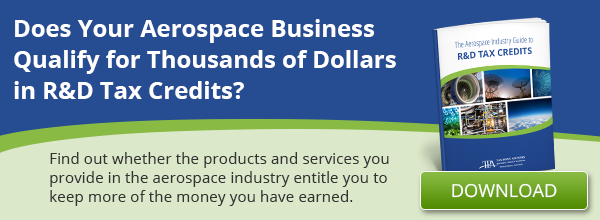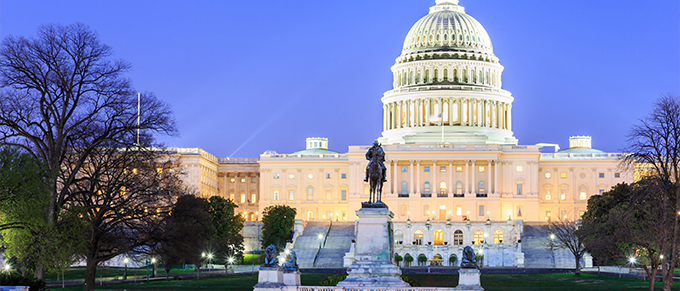It is an exciting time for research and development in the aerospace industry—with strong growth in 2016 after several years of stagnancy, the outlook is healthy for the development of groundbreaking technology.
Read full story
It is an exciting time for the aerospace industry—the outlook is healthy for innovation and the development of groundbreaking technology. As an industry significantly invested in research and development (R&D) activities, aerospace companies can further reinvest in their growth by qualifying for federal and state R&D tax credits. But which activities qualify, and how does the process work?
Read full story
In a show of bipartisanship, U.S. Sens. Chris Coons (D-DE) and Pat Roberts (R-KS) introduced the Invent and Manufacture in America Act on June 6, 2017. The bill is intended to further enhance the research and development tax credit for those companies that conduct R&D in the U.S. and for those who manufacture products as a result of R&D that took place in the U.S.
Read full story
With so many tax proposals swirling around in Washington, the business world is in a wait-and-see mode to see how it all falls out. While tax reform could very well do away with many of the tax credits businesses utilize, there is nothing in these proposals that would negatively impact the valuable research and development tax credit.
Read full story
It has been well over one year since Congress enacted legislation making R&D permanent. With the many questions surrounding these new enhancements, Tax Point Advisors offers the following clarifications to help business owners understand whether they may utilize the credit.
Read full story
Tax Point Advisors, a leading expert in research and development (R&D) tax credits and specialty tax services, opens southern regional office.
Read full story
New IRS guidance, Notice 2017-23, eases the way for small businesses to benefit from a new option that allows them to apply a portion or all of their R&D tax credits against their payroll tax liability, rather than their income tax liability.
Read full story
In welcome news for taxpayers who work for themselves and businesses with assets under $10 million, the IRS has made permanent an expedited process it had been pilot testing by which small businesses and self-employed individuals (SB/SE) can resolve tax disputes.
Read full story
In a measure that was approved by the New Hampshire Legislature back in 2015, the total aggregate amount of the state’s R&D tax credits will increase to $7 million effective July 1, 2017. The state’s R&D tax credit program is popular—in fact, more manufacturing businesses in the state applied for the R&D credit in 2016 than ever before, far exceeding the current $2 million cap.
Read full story
Businesses in industries across the spectrum are missing out on tens – even hundreds – of thousands of dollars in money-saving opportunities each year because of misconceptions about industry and/or qualifying activities. If you are a business owner who is unsure if your activities qualify for R&D tax credits, make sure to check out our most recent e-book: "The Business Owner’s Guide to R&D Tax Credits"
Read full story












